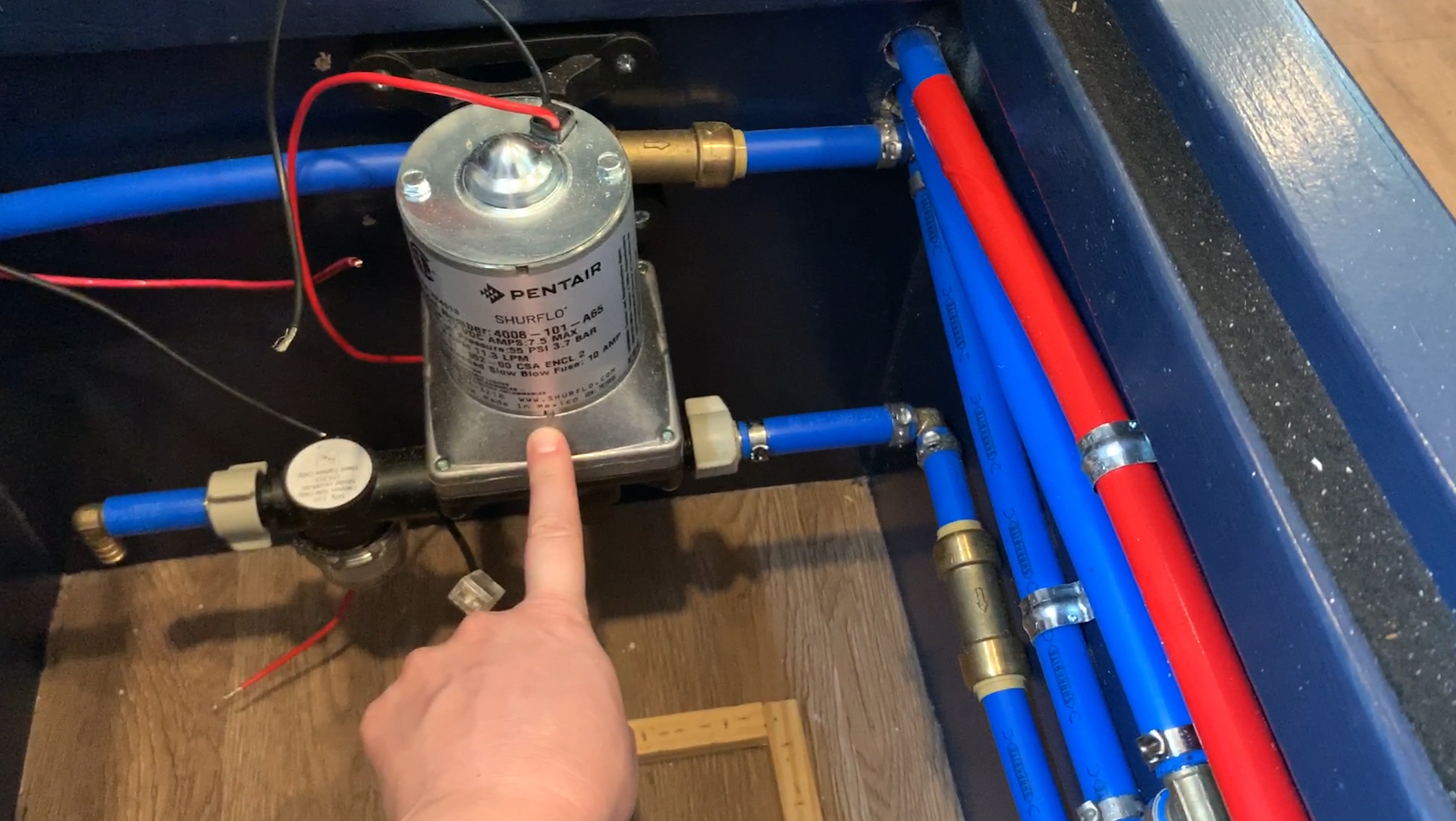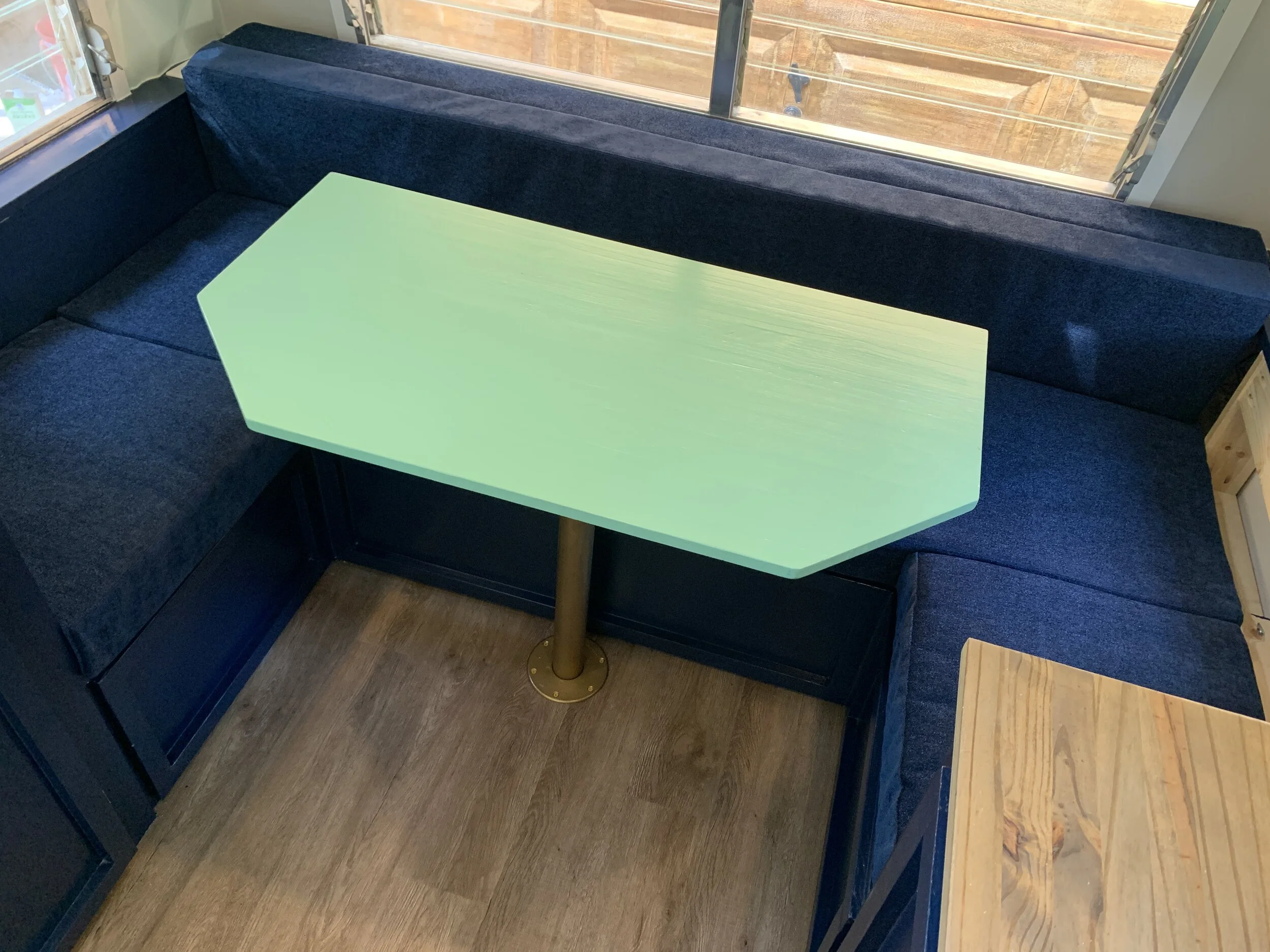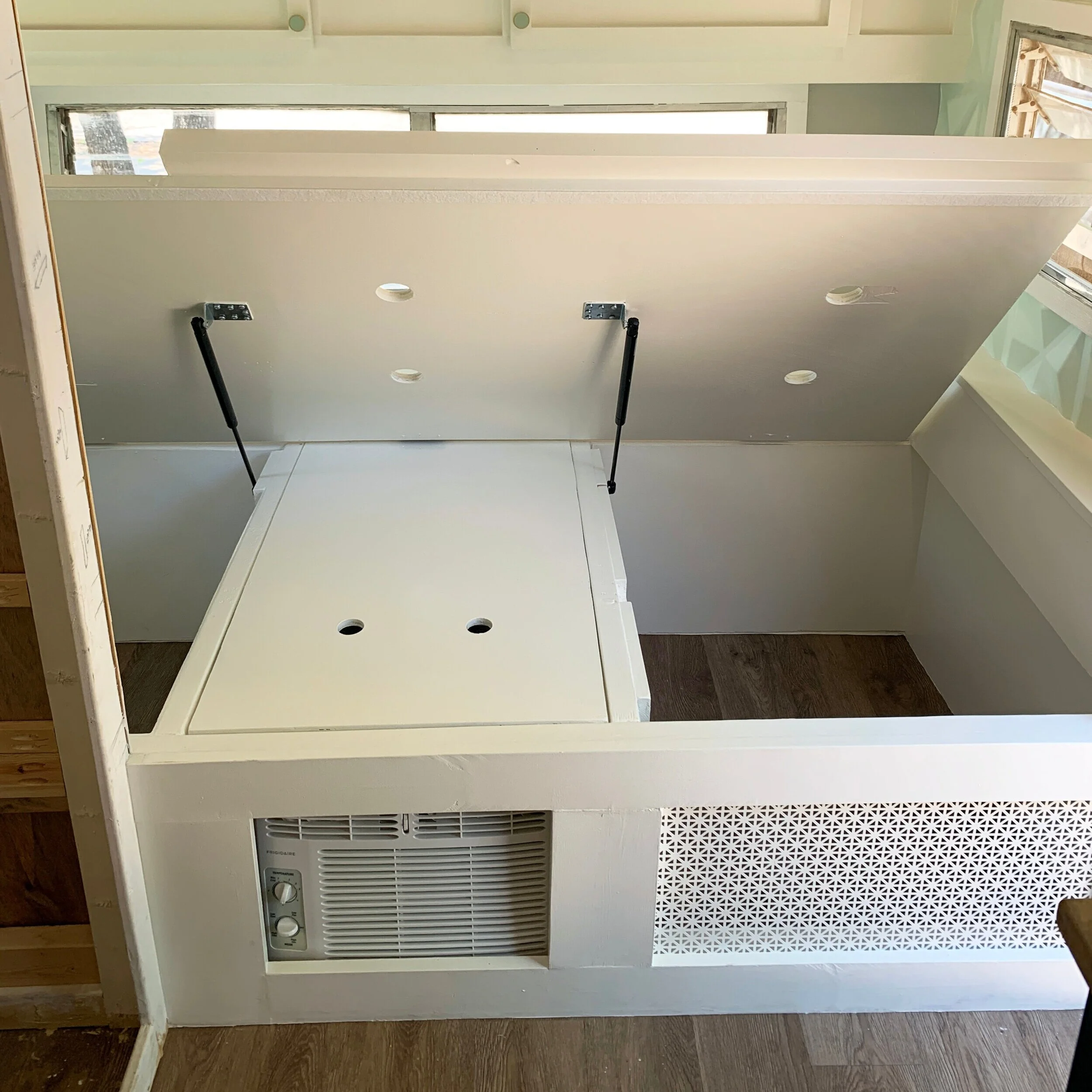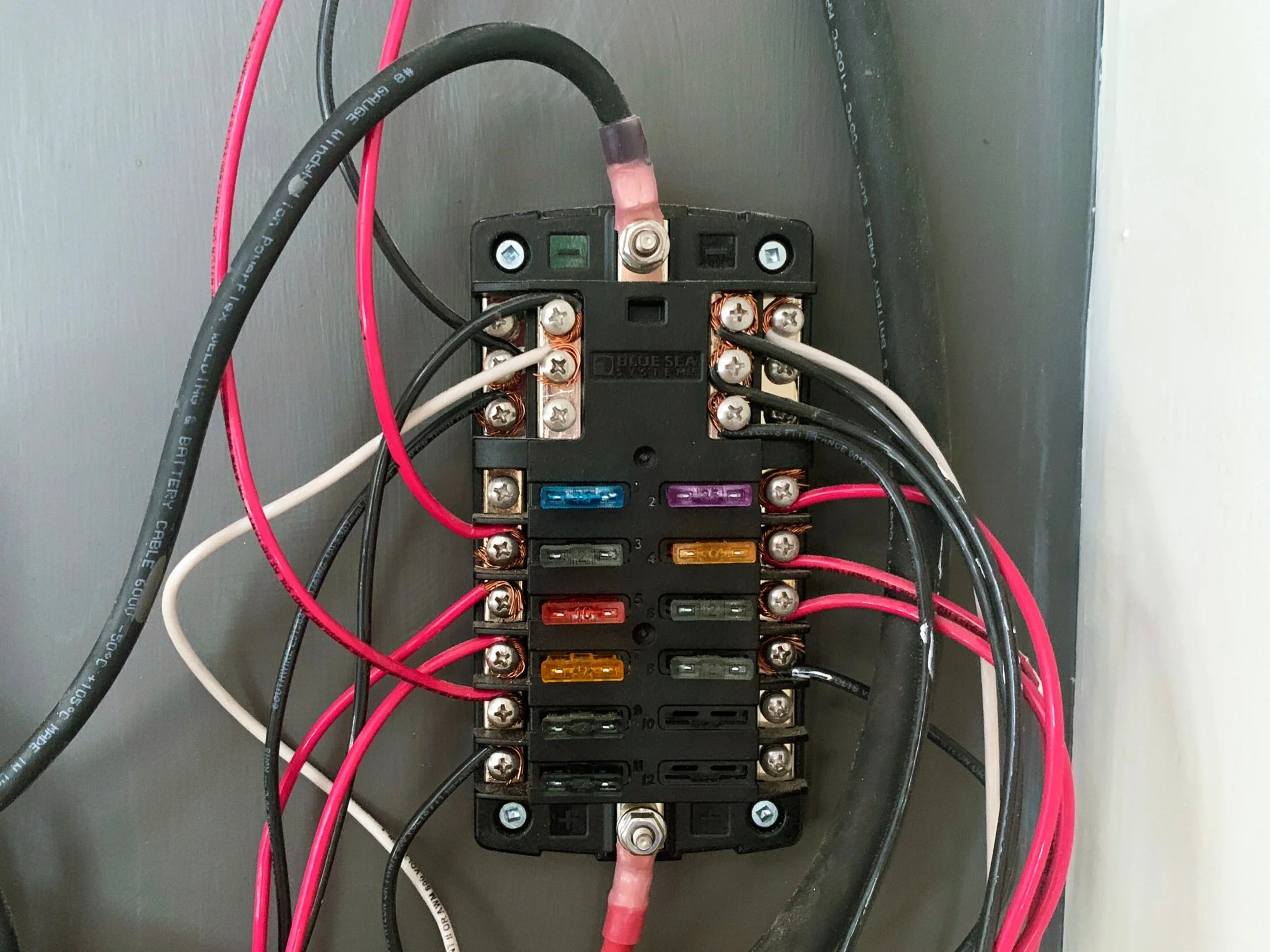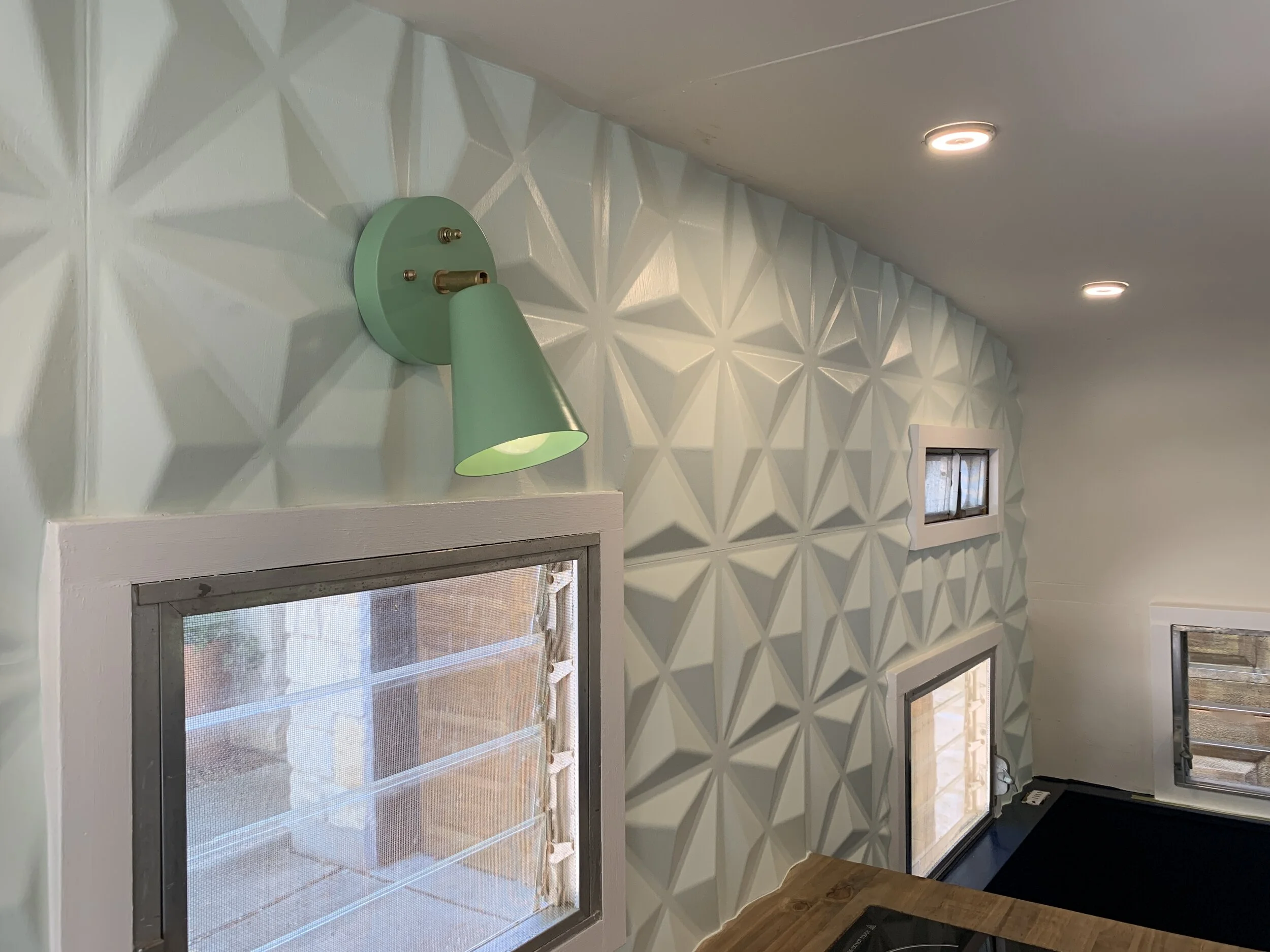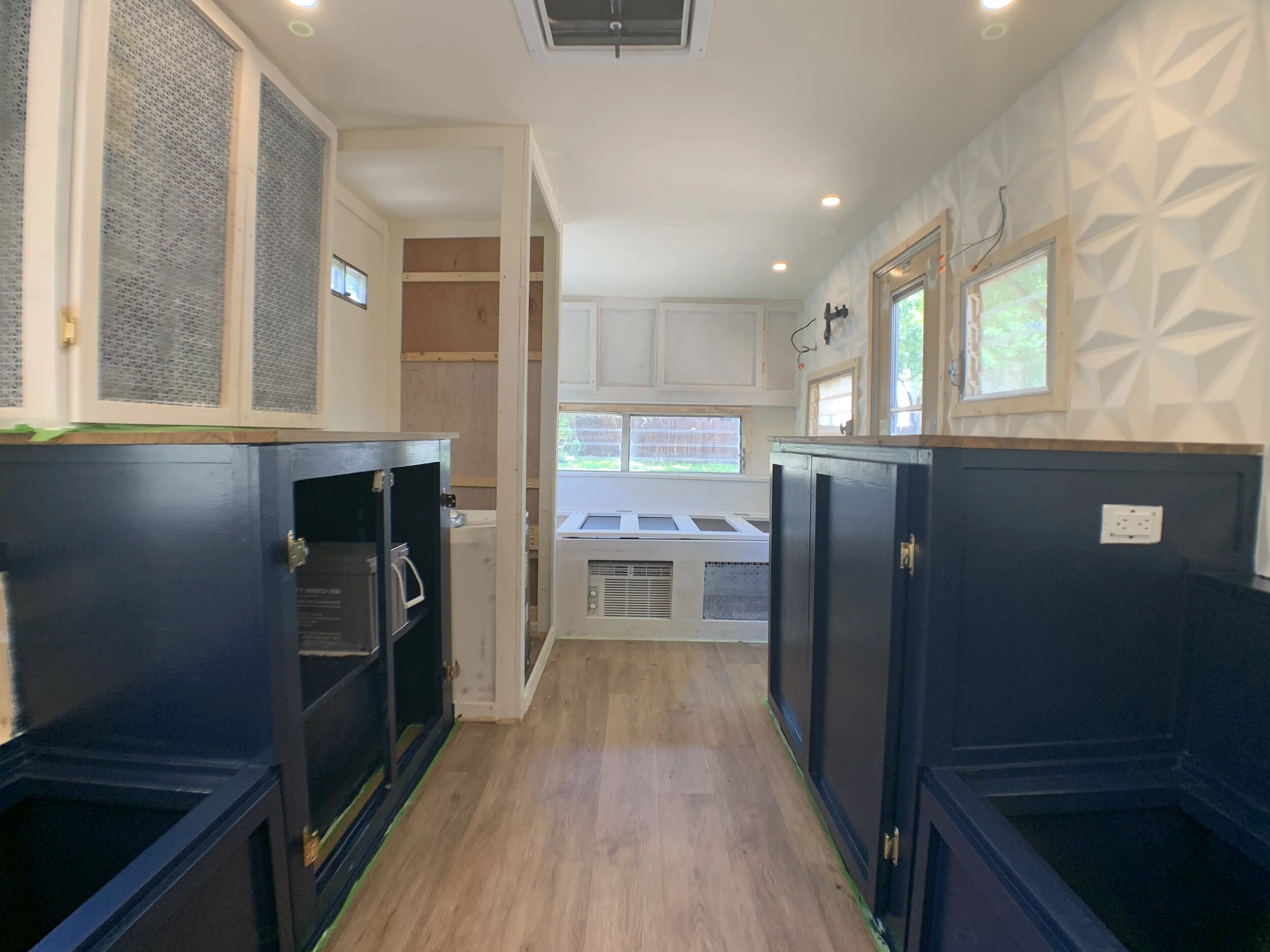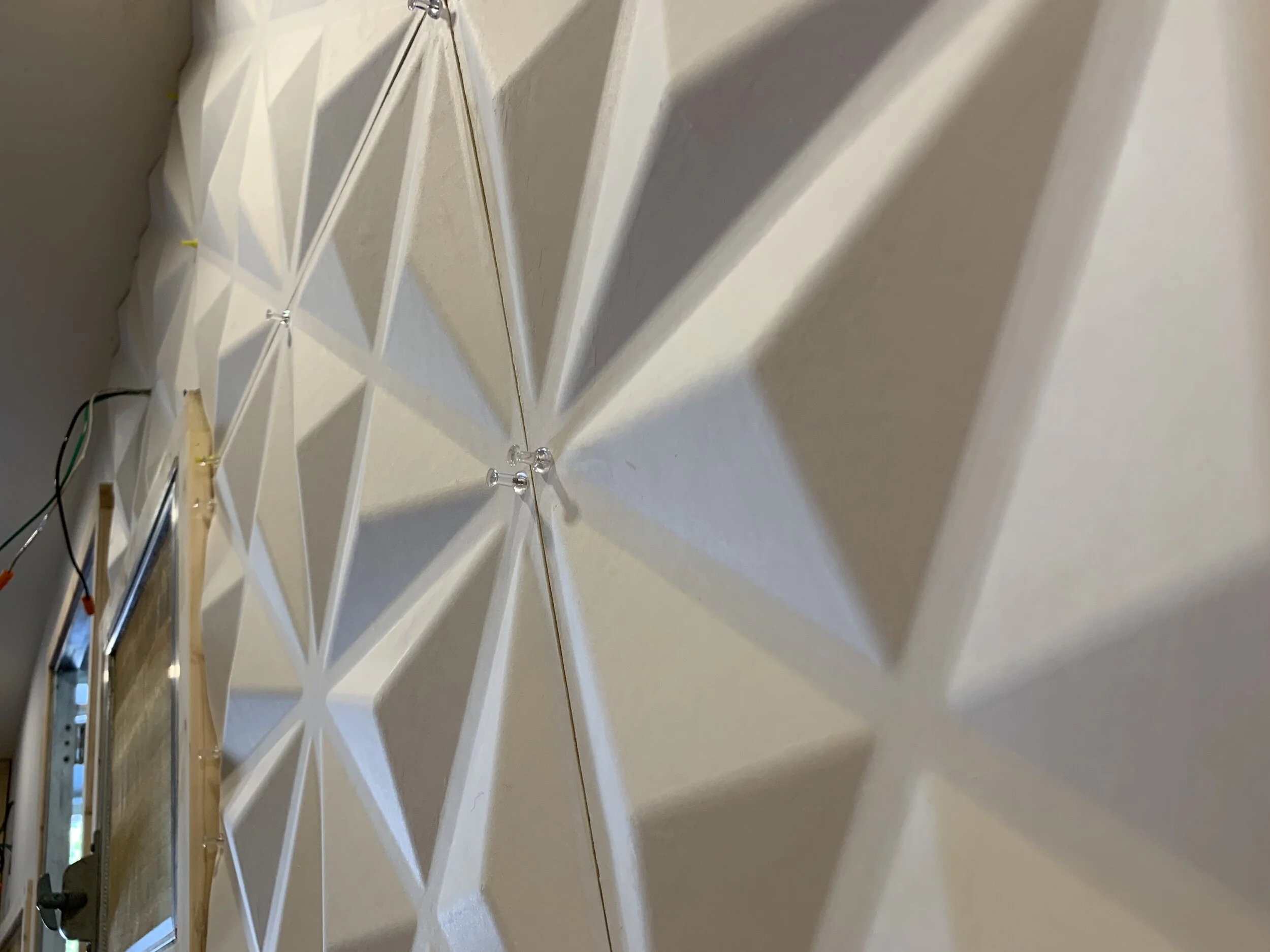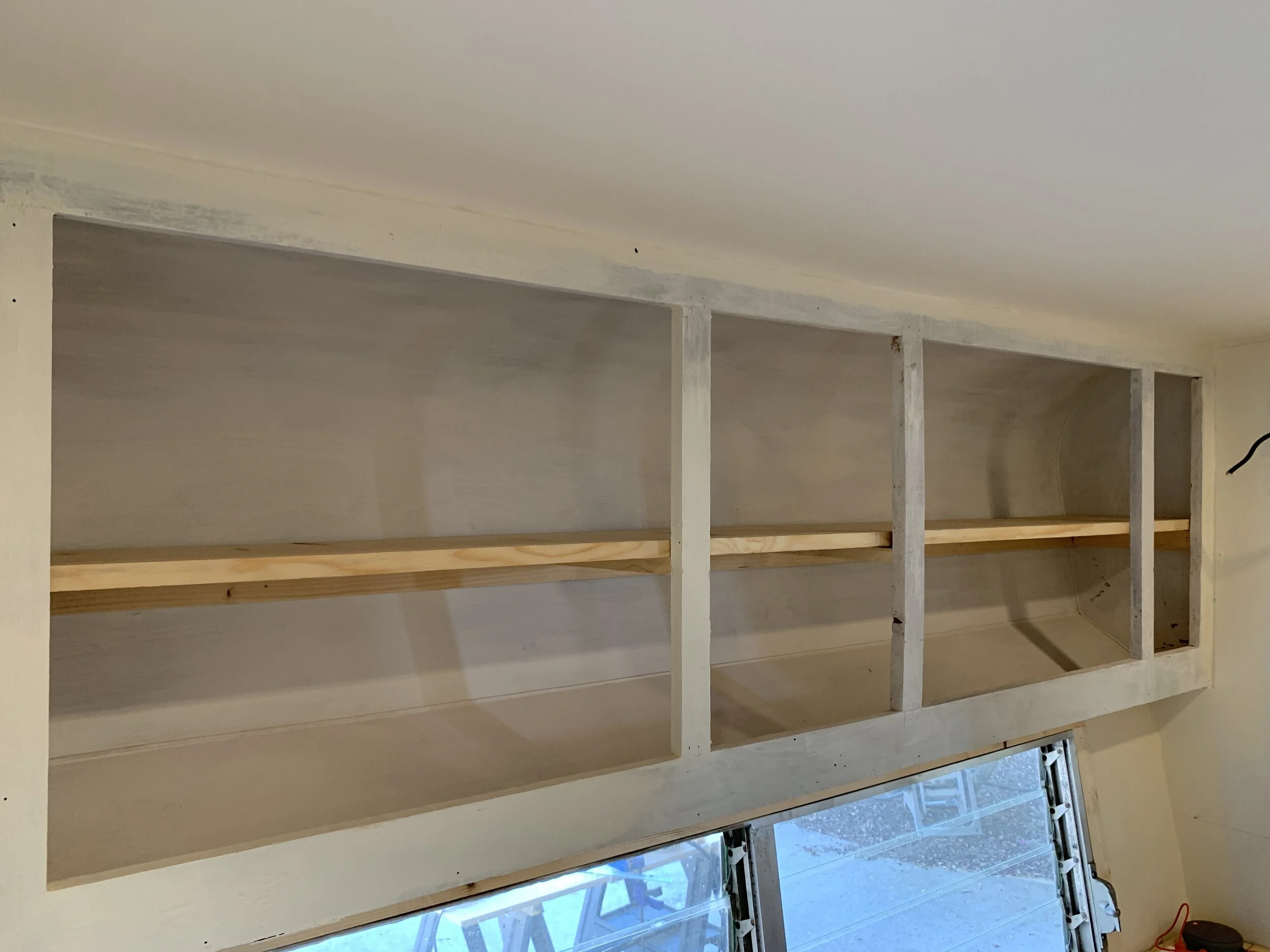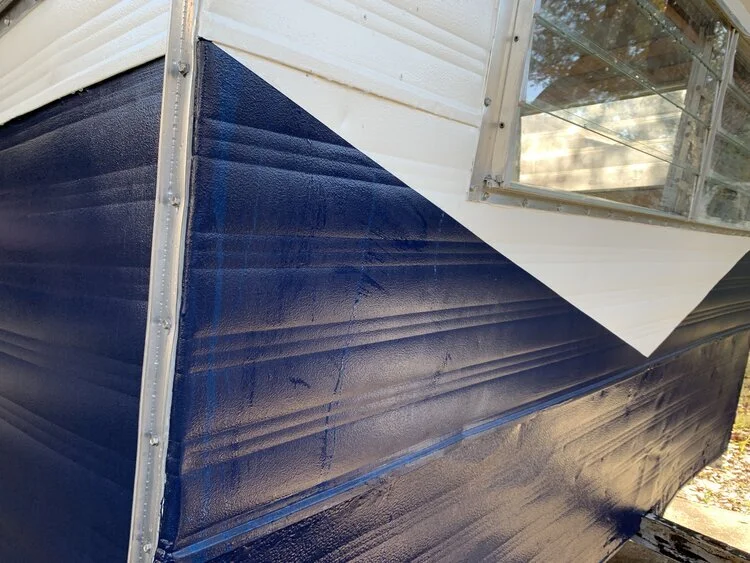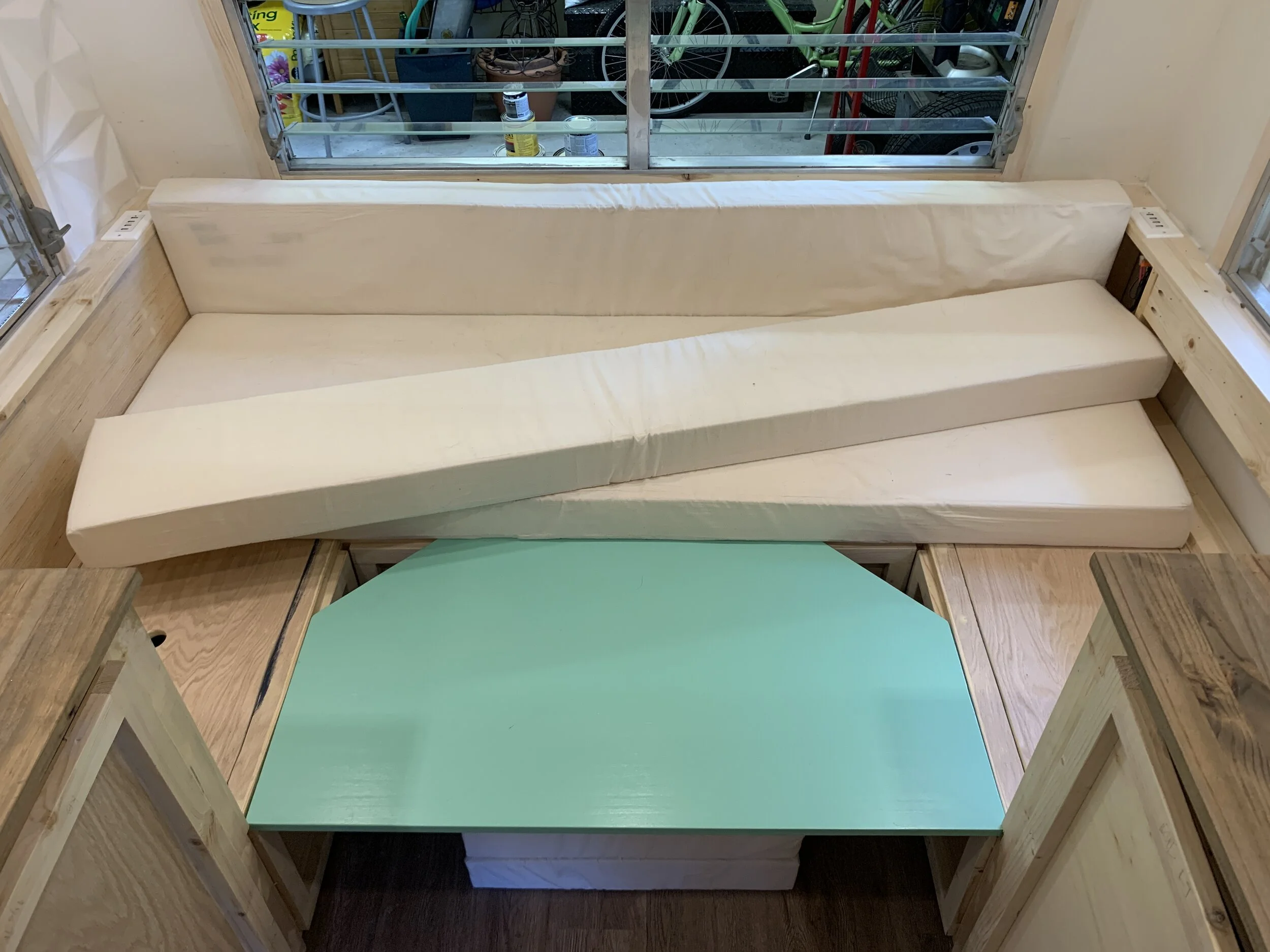The Cameo Camper Renovation: Is this thing on + our new adventure
Hello, and a big welcome to the fives and fives of you reading this!
So... we decided to start a blog to chronicle our lives, and more specifically, our DIY adventures – and hopefully share some helpful tips, tricks, hacks and inspiration for you along the way.
A little about us
Nick and I love keeping ourselves busy with all sorts of projects (ok, truth time – maybe me more than him, but he's so sweet and indulges my many zany ideas, God love him) and so far our project resumé includes slowly customizing and updating our beige, 90s-built, builder-grade first home (still an ongoing "project" for us) and flipping our first house – a large outdated two-story in our neighborhood – a couple years ago. We'll probably dust the old photos off and share some of those projects too as this thing grows, but for now let's focus on the newest addition to our family. Drumroll, please...
Meet The Cameo
The new-to-us 14-foot vintage 1969 Cameo camper we picked up a couple weeks ago!
The right/passenger side on pick-up day — and no, those aren't bullet holes! Even though this thing looks like its straight out of Breaking Bad, they're actually the hookup ports for water, gas, etc. without the connectors installed.
What we know about this little gem
From what I've (not) found so far, this seems to be the only vintage Cameo camper made because I've found close to nothing about it, other than production started in 1968 and ended in 1983.
1969 CameoFD 17'
Exterior: 14' long (17' including trailer hitch) // 7' wide // 7' 7" tall
Interior: 13' 6" long // 7' wide // 6' at it's tallest point
All parts are original (as far as we know) including: 9 slatted Jalousie windows, 1 skylight, gas appliances + light fixtures, bathroom with toilet/shower combo, pebbled sheet linoleum floor, U-shaped dinette area with bench cushions, and 2 twin-ish mattresses (eww).
New tires & packed bearings (yay!)
Partially gutted by who we bought it from (the nicest lady I think that has ever existed, but more on that later)
According to NADA Guides:
"Producing truck campers, travel trailers, fifth wheel trailers and Class C motorhomes over the span of three decades, Cameo were manufactured to cater to a wide recreational vehicle market. Trailers in the Cameo line-up span from 15 to 28 feet. Cameo motorhomes, ranging in lengths from 17 to 25 feet, were built up to the 1983 model year before the company focused on trailers and truck campers. Cameo ended production of all recreational vehicles after the 1989 model year."
Should weigh roughly 1820 lbs. when finished, but this will likely change some after the renovation.
Caution: This will be a long project, since we're only really working on it on the weekends, but if you stay with us we will share as much as we can along the way! So let's dive right in, shall we?
The back on pick-up day — a little rusty here and there, but she has great bones and a lot of character.
She – yes, she feels like a little lady to me – has been partially gutted to remove water damage, and I'm assuming, mold. NBD to us since we've been looking far and wide (pretty much just in Central Texas) for a long time (casually for about a year and a half) for the perfect combo of "man this thing needs some work" (i.e., cheaper + allows us to customize) + "not completely gutted" (so we had some choice on what we wanted to remove vs. keep and be able to use some existing pieces as templates to make work a little easier). She was perfect! The right mix of character and disrepair we were looking for. Nick checked her out in person, we made an offer and agreed to pick her up together the following weekend! Better yet, we only had to drive about an hour to go get her.
The trip home – our maiden voyage, if you will – was a little longer, and much more eventful than the trip there.
Let's start this adventure with a bang (& a flap)
All hooked up and ready to set sail with the Cameo.
I mentioned earlier how the camper was recently partially gutted, and that includes a large portion of water-damaged inner wall immediately on the left when you walk through the door (where the look-like-bullet-holes-but-not-really-bullet-holes are). If you've never looked inside the walls of a camper (because, why would you?), they are basically made of paper-thin (no, really) wood paneling and if you remove the "studs" (1/4"-thick wood furring strips, at best) there's not really any support at all. This was the case and why we secured the bottom of the wall into the wheel well using the one and only coarse thread screw we got from the seller with a screw driver we had brought y'know, for "just in case". (Note to self: Stock this camper with a tool kit ASAP.) We thought "this thing's been driven 150+ miles to get here so we're probably good to drive our short way home, we'll just go slow-ish". (In hindsight, I remember now it had been demo'd since the last long drive.)
Cut to us driving 60 MPH on a windy two-lanes-each-way, undivided, no-shoulders Texas highway with basically the entire right wall of the camper catching air and flapping around in the wind. I could actually see the inside of the camper from the front seat of the truck. Perfect.
Driving a few miles 'til we could find a suitable place to stop, we hopped out of the truck and into the camper to see what could be done to secure it for the remaining 40-ish miles home. I should have taken pictures, but we could actually see a lot of asphalt road from inside the camper. Yes, the wall and floor had come completely apart for a good 4' span of wall (as Nick had predicted before we left), held together only at the ceiling and on the back corner of the camper where the twin bed area is. Worried we were just about to completely ruin this project before it even began, we used a couple of straps looped through the not-bullet-holes to pull the semi-detached wall temporarily in place, hooking onto the sturdiest thing we could find in this partially-reno'd, not-made-of-real-wood-camper that's as old as the first moon landing. Bless this weird little (maybe a towel rod?) metal piece attached to what was left of the stove/fridge cabinet. It actually managed to hold itself together as we drove. The structural instability of the wall + wind also made the door (that latched on the right side of the wall) a bit of a chore to keep closed. (Before take off, we were already instituting a lift and force closed maneuver because of lock alignment + door knob issues.)
Queue unsafe highway stop number 2...
What felt like about 10 minutes and only 5 miles later, the door started doing its best impression of the wall, and began flapping in the wind. Thankfully, the hinge side of the door is on the right/toward the front of the trailer so it didn't get ripped open and off as we drove down the highway. Using our last restraints – two baby bungee cords – we were able to keep the door shut using the "bullet" holes and door knob that was so loose itself, we thought it might fall off at any moment. Fingers crossed since we have no more ties!
Though the spline holding the door's window screen in place got half-removed from the wind, with some luck we made it home and then another 15 (hilly and winding) miles to Nick's mom's (where we're renovating this thing since we have an HOA in our neighborhood) without further incident. It's honestly kind of a miracle none of the beautiful original windows were broken when the wall flexed and flapped all over the place. Hooray!
Since getting it parked successfully, we have cleaned it out a tiny bit, removing miscellaneous materials (wood scraps, metal pipes, a stove, and heavy wood furniture) from inside. Next step is just to start the whole thing, taking measurements and assessing any damage once we start really digging deeper. Then the creativity begins... I'm so excited!
So have y'all ever renovated an old camper before? Know anything about a vintage Cameo you want to share? Any tips? Suggestions? We'd love to hear about it below (and include any links or photos)!













